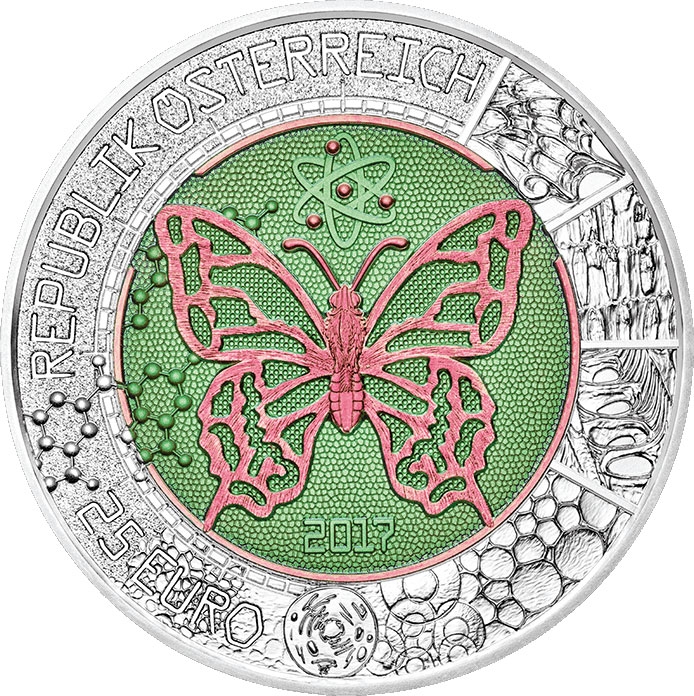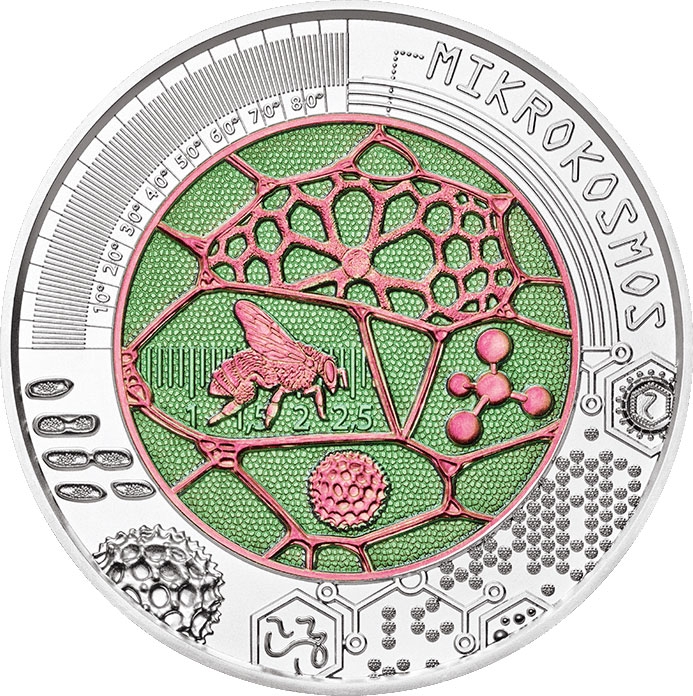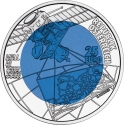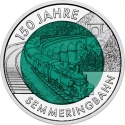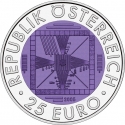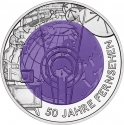You are about to finish your registration. Please check your mailbox (including spam folder). There should be a letter with a confirmation link. Check setting to make sure that your e-mail address is correct.
Send letter againDescription
Following the exploration of the cosmos in 2015, the latest edition in the Austrian Mint’s innovative and ingenious two-tone Silver Niobium series embarks on a technological journey in the opposite direction – to the microcosmos. For the past decade and a half these coins have been employing the combination of silver and niobium to explore fittingly fascinating themes ̶ the journey of scientific discovery featured on Microcosm is no exception.
The means of transport for this journey is a rather unexpected one ̶ the butterfly. A shining example is found in the raspberry-red and grass-green niobium centre of the coin’s obverse. But the journey of discovery really begins on the coin’s reverse, where a microscopic view of a butterfly wing is shown at the top of the centre. Moving clockwise we go even deeper with the help of an electron microscope. But that is not the end of the expedition: the bottom half of the coin shows a cell, its structure and even its core. What makes our Silver Niobium coins so special is the fact that their niobium tones arise without the application of colour, purely through light refraction on an extremely thin, transparent oxide layer. Microcosm, like all the other coins in the series, truly glistens with knowledge.
The coin contains 9 g of 900 Fine silver in its outer ring and 6.5 g of 998 pure niobium. Designed by Mag. Helmut Andexlinger and Herbert Wähner, the coins are boxed with a certificate of authenticity and enclosed in a slipcase.
Obverse

|
Depicts the “raspberry-red” butterfly set against a “grass green” field on the niobium inner disc. The green field behind the butterfly is actually patterned much like the scales of a butterfly’s wing when viewed close-up. Also on the inner disc, above and between the butterfly’s antennae, is a depiction of an atomic model as conceived by Danish physicist Niels Bohr. The nucleus and three revolving electrons are colored the same red as the butterfly, while the orbits are a lighter green than the field. A molecular model crosses over from the left of the outer ring and is partially hidden by the butterfly’s left wing. The year 2017 is inscribed beneath the butterfly in a font resembling one that may be used on an older computer terminal. REPUBLIK ÖSTERREICH |
|---|---|
Reverse

|
The central disc shows a close-up of the surface of pollen. Within one of the cells is a realistic portrayal of a bee, its physiognomy accurate enough to confirm that it is a female. To the right of the bee is a 3D model of a chemical compound that resembles that of methane (CH4). Below the bee is a pollen grain. Behind the bee, however, are what look like the marks on a ruler, with numbers ranging from “1” to “2.5”. 10° 20° 30° 40° 50° 60° 70° 80° MIKROKOSMOS |
| Edge |
25 Euro
Silver Niobium Coin
Microcosm
Subscribe series
KM# 3272
Silver Niobium Coin
Microcosm
Characteristics
| Type | Commemorative Issue (Non-circulating) |
| Material | Bi-Metallic |
| Ring | Silver |
| Center | Niobium |
| Weight | 16.5 g |
| Diameter | 34 mm |
| Thickness | 2.55 mm |
| Shape |
|
| Alignment | Medal |
| Mint |
Austrian Mint
|
